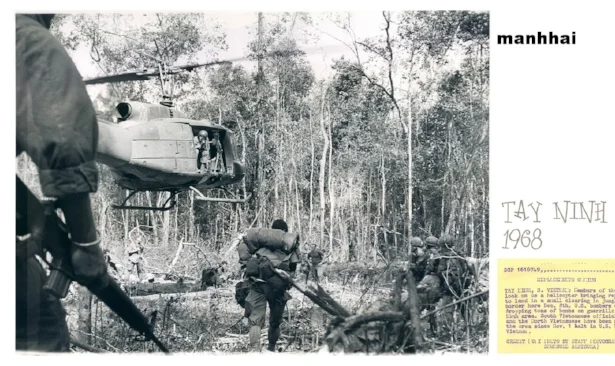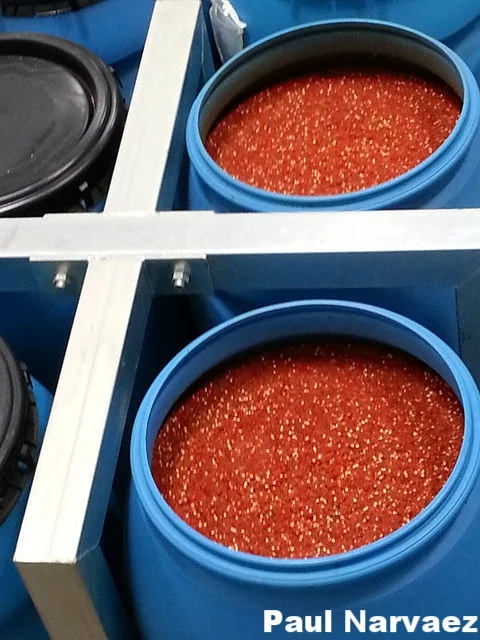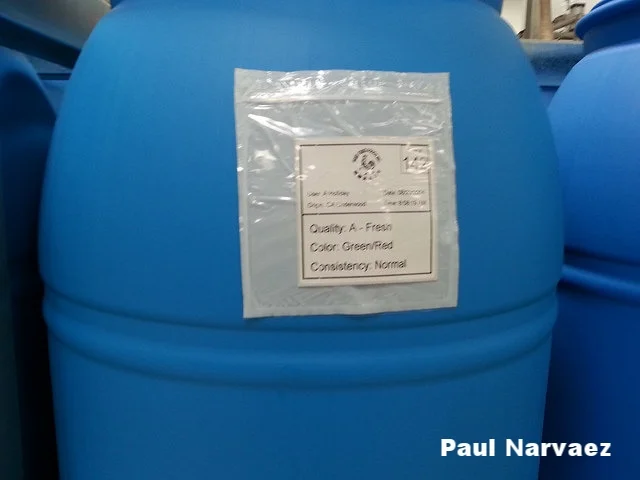Spicy and a Little Sweet: The Story of Sriracha

Why hello there, and welcome back to Kitchen Catastrophes. Today’s post is something of an outlier. It’s not technically a ‘quick tip’, though I guess you could consider it one. It’s not part of our Compendium, or any of our other ongoing series. It’s closest in form to our recently launched “Chef Spotlight”, but this isn’t for a chef, it’s for a company. Which, sure, has a founder and CEO, but that’s not quite the same. In any case, it’s tied to one of the most popular condiments in the last decade, and it’s a company with a history that’s something to read, so let’s talk about Huy Fong Foods.
Getting into Hot Water
First, let’s get the history out of the way, and we’re starting with a fairly odd origin: see, Sriracha sauce, like so many other great things, could not exist without the Vietnam War.
A War mostly remembered for all the good it did for all the countries involved.
And also for inspiring our strategies in Afghanistan, another war that went super-great.
Yes, among the many persons affected by the end of the Vietnam War was David Tran, who had been a Major in the army of South Vietnam and who, following the defeat of that government, found himself unemployed. He took to making sauce at a stand in the street, and having his family deliver bottles on bicycle. After a few years of this, he fled Vietnam, fearing either conscription into new military action against Cambodia, or assignment to a re-education camp. He and his family left on a Taiwanese trawler named the Huey Fong, a boat Tran considered so important to his family’s future, you may have noticed he named his company after it.
And, as this wouldn’t be a Jon O’Guin Kitchen Catastrophe post without a discussion of a word’s etymology or history, let me tell you, it is weirdly difficult to find a proper translation of “Huy Fong”…if you don’t click the correct drop-down menu in Wikipedia. Seriously, I went through like 7 sites trying to work this out, and was about to throw in the towel, because it’s REALLY hard to reverse-translate romanizations of Chinese words, since, you know, Chinese is a tonal language. So a word SPELLED “fong” could be more than 7 distinct words in Cantonese. In the end, I found it…and it doesn’t translate well. “Huy” is “running/flowing together/ the joining of things into one”, like… streams joining a river, and “Fong” means “abundant, lush, a lot”. So the closest it can be translated is something like “Abundant Unity” or “Working As One, Riches”
That doesn’t even get into the fact that a true transliteration uses an E instead of an O, and that there are TWO valid ways to write the character in Chinese…Look, Chinese is HARD.
Terrible translation aside ended, DAVID ended up in Los Angeles, where he started making his sauce again, and selling it to local Asian restaurants and grocers. Why? Because he didn’t like American hot sauces, and neither did a lot of the community in the area. And, when you think about it, where was the first place you remember seeing that tall red bottle with the green top? If you got in before the hype (say, back in 2006), it was probably at an Asian restaurant.
Because here’s the thing: it’s not like David was running around buying ad space, or had a crack team of international salesmen. Huy Fong doesn’t employ ANY salesmen. Nor do they spend any money directly on advertising. Sriracha got popular because…well partly just because it got popular, but also because it was GOOD. People ate it, liked it, and bought it. They told their friends, who tried it, liked it, and bought it. My two primary sources for opinions on foodstuffs are Bon Appetit and America’s Test Kitchen. Bon Appetit named Sriracha its “Ingredient of the Year” in 2010, and ATK named it “our favorite Hot Sauce” in 2012 or so. This stuff is just plain made well. So how, exactly, is it made?
Seeing The Spicy Sausage Get Made
Depending on where you start looking, the process of making sriracha is either impressively focused, meticulously organized, and honestly a couple little notes of dystopian-style tyranny, or is stupidly simple and direct. We’ll start with the latter, because a spoonful of sugar helps the “lurking suspicion of ill intent” go down.
Pretty sure that’s how the song went.
So, how is the sauce itself made? Well, you know how I was talking about sambal oelek on Monday, and linked to other posts where I talked about it? That’s the heart of the operation. To be more exact, Huy Fong Foods makes 3 core products, and the pattern is really easy to follow:
First, they make Sambal Oelek, which is a simple mash of chiles, vinegar, and salt. They immediately dump the whole mash into big blue barrels to store, for reasons we’ll get into later. But they start with big barrels of sambal.
I honestly debated re-using my own picture of my sambal jar again.
Their next product doesn’t have a fancy name, which is great, because that hunt for Huy Fong really did a number on my researching drive, and is instead just called “garlic-chile sauce”. And it’s made by…mixing garlic into the sambal base. Not even like, whole or minced garlic! They make their own garlic powder by drying out local garlic, and pulverize it. One base, two sauces. Simple, direct, easy.
I don’t think that’s what they meant when they said “go easy on the hot sauce.”
Their last product, as you can probably guess, is sriracha, which is made by just taking that garlic chili sauce, and pureeing it with sugar for a smoother texture and sweeter flavor. So depending on how you look at it, you could argue that Huy Fong Foods really only makes one of two things: either they just make Sriracha, and give up partway on some batches, or they only make sambal, and decide to get more and more fancy from time to time.
Now, that was the light and fun way of describing how it gets made. To get more impressive, and maybe a little worrying, we have to go much broader. Not just how they form the physical sauce in the warehouse, but how they go from root to shelf.
Tran-scendent
One of the things that sets sriracha apart, flavor-wise and texturally, is their use of fresh chiles instead of dried. Which, when you think about it, is a little weird. Chiles don’t grow year-round, do they? The answer to that is No. Well, technically, it’s “yes, there is always SOMEWHERE on Earth with the proper climate to be raising chiles at any given point of the year” but that answer is a little pedantic even for me. In California, there’s only about 10 weeks of chile harvesting season. Which is where those blue barrels I mentioned earlier come into play: During Chile harvest season, Huy Fong Foods gets around 50,000 TONS of peppers, and processes them into the sambal base, which they then store in the factory so they can keep bottling and making Sriracha and Garlic Chile Sauce year-round.
I’m intrigued by the designation of “normal” on the consistency line. What other options do they use?
And here’s another fact about those peppers: they start getting processed within a matter of HOURS of being removed from the ground. Tran felt that the freshness of the peppers was paramount, so he insisted on finding a pepper farm within an hour of his factory location to grow his peppers. And he did, reaching out and starting a deal with Underwood Farms in the area. And in the 30 years they were in business together, they went from 50 acres of peppers to 2,000 acres. When David built his newer factory, he limited his search to only towns within 2-3 hours drive from the farm.
You may have noticed a past tense earlier: “they were in business together”. That’s because, as of 2 years ago, the two are no longer in business. Before we talk about that, we need to talk about the peppers.
Originally, the sauce was made with Serrano peppers, but those proved difficult to easily pick, so they moved to jalapeños. You can actually get different colors of sauce in the bottle, depending on what part of the season the peppers were picked in, because they don’t use coloring, so younger peppers can make a bottle more orange or brown than usual.
Side note: big ups to Paul Narvaez, who uploaded a bunch of pictures on his tour through the factory.
Speaking of those bottles, they’re made on site! David couldn’t find a bottle he was totally happy with, so he built in a bottle-making component to the factory, and so Huy Fong makes all its own bottles. It also makes all of the blue barrels it stores the sambal mash in. Both the bottle making machines and the barrel making ones were originally modified to suit the company’s needs by David himself, who taught himself how to be a machinist and welder in order to build the right components.
And that last paragraph is where I think we can start to see a bit of the weirdness: David invented the sauce. Then, none of the bottles he could get were good enough, so he made the bottles. He built the machines that build the bottles. He refuses to use peppers that are more than a day off the vine. He’s suing his business partner of 30 years for breach of contract, a contract that, it should be noted, openly admits a clause in it was that, while Underwood bought and maintained all the equipment needed for the pepper harvest, he was prohibited from USING that equipment for anything OTHER than that harvest.
“Mighty fine new tractor, Tim.”
”Thank you, Pete.”
”What’re you going to use it on?”
”I am legally bound to only use it for the pepper harvest.”
Did I mention that all of Tran’s family are employed in various high-positions in the company? I don’t want to seem racist here, especially given that Tran is Hoa, a minority population in Vietnam of ethnically Chinese peoples, who retained their identity so firmly that David Tran and his family predominantly speak Cantonese to each other, but this is starting to sound a little “communist dictator-y”
But it could be something else. Another motive that’s a little more esoteric, but much more pleasing to consider. See, David Tran has another financial note of distinction: Sriracha isn’t a publicly traded company. There are no stockholders. There are no investors. Huy Fong Foods was founded on a family loan. And David has refused billions of dollars in offers from various businesses, venture capitalists, and so on, for one consistently stated reason: David Tran doesn’t care about the money. David Tran just wants people to have great hot sauce. And the more people who want it, the more he needs to make.
David Tran may come across as a little controlling, but think about some of the numbers I mentioned earlier: they pick 50,000 TONS of peppers. There are AIRCRAFT CARRIERS smaller than that.
For example, this one: France’s Charles de Gaulle carrier, which has a displacement of 47,000 tons.
That’s a lot of sauce. It’s a lot of people’s happiness on the line if things go wrong. Wouldn’t you be a little uptight about it too?
In either case, it’s hard to imagine a culinary cornerstone more convoluted, and comple- I’m getting a little too alliterative here. My point is that the story behind sriracha is pretty cool. Hell, I didn’t even get to touch on the fact that it’s technically not even a Vietnamese sauce: Sri Racha is a place in Thailand, where it’s believed the sauce was invented. David himself has a great analogy for why, despite the differing location, he still considers the sauce Vietnamese: “ It’s like pizza, in America. Certainly it was created in Italy, but the pizza of Italy and the pizza of America are not quite the same. The same shapes, the same ideas, but different executions.”
And then there’s Swedish pizza. Like this popular pie: Banana, Peanut, Ham, Curry, and onion.
Sriracha. It’s spicy, and a little sweet, and it’s got a heck of a history behind it. And I felt like digging into it a little. If only to show you that, hey, if you like sriracha, you’ll probably like sambal too, so try it already.
Help Jon stock his fridge with sauces by supporting us on Patreon. Or spread the word for our site like you probably did for Sriracha, by sharing our posts, liking us on Facebook, and other social media activities!
MONDAY: PUTTING ALL MY EGGS IN ONE SPICY LITTLE BASKET.
NEXT THURSDAY: I BUMPED BACK A TRIP TO THE FAIR TO TALK ABOUT SAUCE, SO LET’S GET BACK TO IT.















